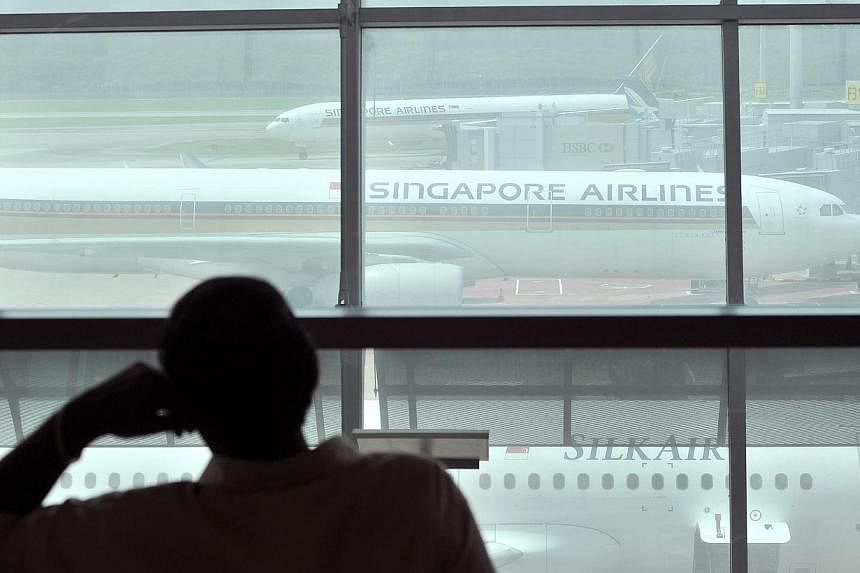Widespread flight delays could hit Asia, including Singapore, in as little as five years if countries in the region do not act now and move as one to cope with growing flight numbers, warns the head of a leading air traffic research institute.
At worst, "catastrophic gridlock" will lead to stagnation in the number of flights in Asia because air traffic controllers cannot cope with additional flights, said Mr Hsin Chen Chung, who heads the Air Traffic Management Research Institute at Nanyang Technological University (NTU).
"The situation right now is barely tolerable in some pockets of the region... If we don't do anything, my guess is that in five to 10 years, we will experience what Europe went through 15 years ago - catastrophic gridlock."
He cited the routes from Singapore to Jakarta, Bangkok and Hong Kong; Bangkok to Hong Kong; and from Asia to Europe as examples of busy air paths that could develop into choke points.
Mr Hsin, 67, who has a PhD in aviation (air traffic management) from the Massachusetts Institute of Technology, said that with the demand for international and domestic air travel in Asia set to outpace growth elsewhere, there is growing global concern on how and if the region's air traffic management system can cope.
The International Air Transport Association estimates that between last year and 2017, passenger traffic in the Asia-Pacific will grow by 5.7 per cent a year, compared with 3.9 per cent in Europe and 3.6 per cent in North America. The urgent need to address the situation prompted the Civil Aviation Authority of Singapore to jointly set up with NTU the air traffic research centre, which opened last November.
A key challenge in politically and economically diverse Asia, industry experts said, is that countries are not keen to exchange information on air traffic capabilities and technology for fear of compromising national interests.
But as Mr Andrew Herdman, director-general of the Association of Asia Pacific Airlines, pointed out, when carriers fly over multiple air traffic zones, it is important for different service providers to harmonise their procedures for a smooth handover.
Mr Hsin said that as Asian states are not keen to share information, Europe's single sky concept, with air traffic controlled by one centre, is unlikely to work here.
Still, the region can push for common systems and procedures, and invest in technology that allows air traffic controllers to better track aircraft movements.
By so doing, the separation distance between planes, for example, can be reduced and more flights can be added, he said.
The need for better coverage is critical - as the disappearance of Malaysia Airlines Flight MH370 has shown - in a region where planes fly over vast oceans that do not tend to be fully covered by commercial radar. Countries must also grow their own air traffic capacity, experts said.
Mr Hsin said: "There is much work to be done in Asia to improve air traffic management and grow capacity but at least there is now a common understanding and agreement that there is a need for countries to work together to tackle growing air traffic.
"This is a good first step."

